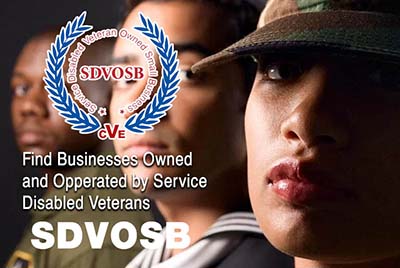History of the American Legion:
The American Legion was chartered by Congress in 1919 as a patriotic veterans organization. Focusing on service to veterans, servicemembers and communities, the Legion evolved from a group of war-weary veterans of World War I into one of the most influential nonprofit groups in the United States. Membership swiftly grew to over 1 million, and local posts sprang up across the country. Today, membership stands at over 2.4 million in 14,000 posts worldwide. The posts are organized into 55 departments: one each for the 50 states, along with the District of Columbia, Puerto Rico, France, Mexico and the Philippines.
Over the years, the Legion has influenced considerable social change in America, won hundreds of benefits for veterans and produced many important programs for children and youth. Following is a chronology of significant dates in Legion history:
1919
March 15-17
Members of the American Expeditionary Force convene in Paris for the first American Legion caucus.
May 8-10
St. Louis Caucus. "The American Legion" is adopted as the organization's official name. The Legion's draft preamble and constitution are approved.
June 9
The National Executive Committee adopts the Legion emblem.
Sept. 16
Congress charters The American Legion.
Nov. 10-12
First Legion convention convenes in Minneapolis. The Constitution and preamble are adopted. Delegates vote 361-323 to locate the Legion's national headquarters in Indianapolis, instead of Washington. A resolution is passed in support of Boy Scouts of America. Today, the Legion is the chartering agency for more than 1,700 Scouting units made up of approximately 64,000 youths.
1920s
Aug. 9, 1921
The Legion's efforts result in the creation of the U.S. Veterans Bureau, forerunner of the Veterans Administration. Today, the Legion continues to lobby for adequate funding to cover medical, disability, education and other benefits for veterans.
June 15, 1923
The first "Flag Code" is drafted during a Legion conference in Washington. Congress adopts the code in 1942. Today, the Legion is at the forefront of efforts to pass a constitutional amendment to protect the U.S. flag from physical desecration.
July 17, 1925
The Legion creates the American Legion Baseball program. Today, more than 50 percent of Major League Baseball players are graduates of the program. About 82,000 youths play on Legion-sponsored teams each year.
1930s
June 23, 1935
The first American Legion Boys State convenes in Springfield, Ill., to help youths gain an understanding of the structure and operation of the federal government. The first Boys Nation, bringing together youth leadership from all the Boys State programs, convenes in 1946. Today, more than 19,500 young men participate in Boys State, and 98 in Boys Nation, from 49 of the 50 states.
June 1, 1938
The final round of the Legion's first annual National High School Oratorical Contest is conducted in Norman, Okla. Today, more than 3,400 high-school students from around the country compete annually in the contest, which promotes a greater understanding of the U.S. Constitution. Winners receive thousands of dollars in college scholarships.
1940s
Dec. 15, 1943
Past National Commander Harry W. Colmery starts to write in longhand, on Mayflower Hotel stationery in Washington, the first draft of what will later become the "GI Bill of Rights" – considered the Legion's single greatest legislative achievement.
June 22, 1944
President Franklin D. Roosevelt signs into law the original GI Bill, or Servicemen's Readjustment Act, ushering in monumental changes in U.S. society. Higher education becomes democratized after 8 million veterans go to school on the GI Bill, get better jobs, buy houses in the suburbs and raise families. For every dollar spent on educating veterans, the U.S. economy eventually gets $7 back.
May 29, 1946
The Legion and the American Legion Auxiliary present a small, struggling organization called the American Heart Association with a $50,000 grant. The grant inaugurates a nationwide program for the study, prevention and treatment of rheumatic heart disease.
1950s
May 4, 1950
The Legion votes to contribute funds to the field of mental health, thereby playing a key role in launching the National Association for Mental Health.
July 9, 1954
The American Legion Child Welfare Foundation is formed. Today, more than $11 million has been awarded to youth organizations and projects designed to help America's children.
1960s
Sept. 1, 1966
The Legion voices great concern over the fate of prisoners of war in Vietnam. Today, the Legion urges a full accounting of all POWs and troops missing in action; and has formed a special group from among the nation's major veterans organizations to continue pressing for further resolution of this issue.
Aug. 24, 1969
The Legion's National Executive Committee establishes the National Emergency Fund as a result of the effects of Hurricane Camille.
1970s
May 1, 1972
The Legion implements a Halloween safety program for children; it remains the only national program of its kind.
April 1, 1975
The Legion-sponsored Freedom Bell goes aboard the Freedom Train during its tour of the country in celebration of the U.S. Bicentennial. Six years later, the bell is dedicated at its permanent home in Columbus Plaza, opposite Union Station in Washington.
1980s
Aug. 26, 1982
The Legion presents a $1 million check to the Vietnam Veterans Memorial Fund for construction of the Wall in Washington, becoming the largest single contributor to the project.
July 21, 1983
The Legion announces its sponsorship of an independent study on the effects of exposure to Agent Orange on Vietnam War veterans. Congress receives the results of the "American Legion-Columbia University Study of Vietnam-era Veterans" in 1989.
Jan. 1, 1989
The Veterans Administration is elevated to Cabinet-level status as the Department of Veterans Affairs (VA). The Legion fought hard for the change, arguing that veterans deserve representation at the highest levels of government.
Oct. 16, 1989
The long-standing objective of the Legion to improve adjudication procedures for veterans claims is achieved when the U.S. Court of Veterans Appeals becomes operational. Most of the provisions contained in the law creating the court were originally included in the Veterans Reassurance Act, written by the Legion and introduced in Congress in 1988.
1990s
Aug. 2, 1990
The Legion files suit against the federal government for failure to conduct a Congress-mandated study about the effects of Agent Orange on veterans who served in Vietnam.
Oct. 11, 1990
The Legion creates the Family Support Network to assist families of servicemembers deployed for operations Desert Shield and Desert Storm in the Middle East. Through local posts, the network offers a wide range of assistance, including financial assistance, mowing lawns, baby-sitting and more. Today, FSN continues to assist families affected by military activation and deployment.
June 15, 1991
The Legion hosts its first Junior Shooting Sports National Air Rifle Championships at the Olympic Training Center in Colorado Springs, Colo. Today, more than 2,000 high school students a year enter the contest, which teaches gun safety and marksmanship.
Aug. 24, 1994
The Legion announces the creation of the Citizens Flag Alliance, a coalition of organizations and individual citizens united to work for a constitutional amendment to protect the U.S. flag from physical desecration. Since 1995, the amendment has passed in the House by an supermajority six times: in 1995, 1997, 1999, 2001, 2003 and 2005. In 2006, the amendment fell one vote short of passage in the Senate.
Oct. 1, 1995
The Legion forms the Persian Gulf Task Force to enhance service for the newest generation of wartime veterans, thousands of whom suffer from illnesses linked to their service in the region.
Sept. 16, 1996
The Legion awards a $20,000 college scholarship to each of the 10 inaugural Samsung American Legion high school scholars.
June 11, 1997
The National Emergency Fund surpasses the $1 million mark in cash grants given to flood victims who belong to the Legion family. Most grant recipients reside in the flood plains of Ohio, Kentucky, Indiana, Minnesota and North Dakota.
Sept. 3, 1997
The Legion presents its first National Law Enforcement Officer of the Year award at the 79th National Convention in Orlando, Fla.
2000s
March 29, 2000
Senate Joint Resolution 14, the constitutional amendment that would return the people's right to protect the U.S. flag from physical desecration, falls four votes short of the necessary 67 to override a presidential veto.
November 2002
The Legion launches the national "I Am Not A Number" campaign to identify and document the delays veterans face in obtaining medical care from VA.
August 2005
Delegates at the 87th National Convention in Honolulu unanimously voice their support for the global war on terrorism with Resolution 169.
June 30, 2008
President George W. Bush signs into law the Post-9/11 Veterans Educational Assistance Act, a next-generation GI Bill strongly supported by the Legion. The bill renews the federal government's commitment to veterans by providing them with substantially better education benefits. The Post-9/11 GI Bill took effect Aug. 1, 2009, and sent an unprecedented number of veterans to college. Today, as at its formation, the Legion remains at the forefront of efforts to improve education and other benefits for all veterans.
February 2010
The entire Legion family bands together and wins $250,000 for Operation Comfort Warriors (OCW) in PepsiCo's Refresh Everything Project, submitting the most votes in an online contest and beating out hundreds of other groups and charities to take first place in the contest's first month. A big part of getting the word out was the American Legion Online Update e-newsletter. This is an early example of the still growing power of online and social media to augment everything the Legion does.
October 2010
Continuing a long-standing tradition of advocating for timely and adequate medical care for veterans, the Legion forms a PTS-TBI Ad Hoc Committee to both examine current methods by VA and the Department of Defense of treating the two conditions, and investigate potential alternatives.
December 2010
The Legion officially begins a relationship with United States Automobile Association (USAA), making the veteran-founded insurance company "The American Legion's preferred provider of financial services." The purchase of USAA products gains money for Legion programs. USAA representatives often give members helpful financial information and tips through Legion media.
August 2011
The American Legion Baseball World Series is held for the first time in the tournament's new permanent home, Shelby, N.C. Prior to this, the tournament had rotated to different cities. Total paid attendance at the Shelby contests soars to an all-time high of 86,000 total.
October 2012
VA guarantees its 20 millionth home loan. 1936-1937 National Commander Harry Colmery and 1943-1944 National Commander Warren Atherton escorted the original GI Bill of Rights through Congress in 1944, arguing passionately for veterans educational benefits, government-assured health care and what they called "readjustment allowances." Today Colmery and Atherton are lauded as the "fathers of the GI Bill" and its successors.
Be sure to check out our entire military history and rememberance page to see all the military-releated holidays and observances.







